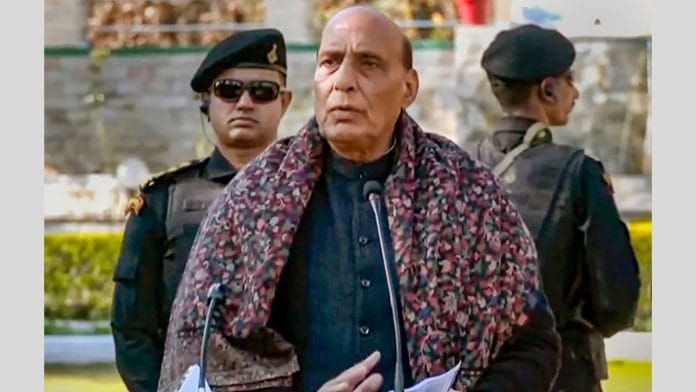Rajnath Singh’s return as the Minister of Defence isn’t a surprise given the election results. Shifting portfolios wasn’t expected at this senior level, so the eastern end of South Block gets a continuity which is as rare as a pollution-free Delhi. Given the nature of national security threats and the full spectrum of decisions that need to be taken, this continuity could well be a blessing. The challenges are many, though some may even be in the domain of foreign policy, but they nevertheless impact deeply on national security. And none more so than China and its expansionist actions since 2020.
The extraordinary deployment of troops that followed the bloody clashes in Galwan, Ladakh, in 2020 hasn’t been an easy ride for the Army. Superbly supported by the Air Force and its impressive airlift capability, the Army has had to boost its troop strength in the cold desert by multiples of thousands. It hasn’t been an easy process, and it hasn’t come free, in terms of men, material, and equipment. All of which need to be replenished regularly, so while the latter can be bought off the shelf, the former needs far greater attention. Quality manpower is, of course, the ultimate weapon.
The biggest issue before the defence minister is a carryover from the previous government, and the one issue that has the biggest impact on the quality of manpower in all three services is Agnipath, the new recruitment policy that is proving to be a matter of great concern. In a country like India, with an enormous pool of human resources, if the finance ministry dictates military manpower policies, then the final output in terms of military personnel can only be commensurate with the level of investments made by the government. The Agnipath scheme has created a situation where, within the same combat unit, there is a duality of pay and perks between different soldiers. This is a deadly concoction.
The shift in morale is palpable, and most vitally, the repeated deployment of experienced hands for routine duties is concerning. Simply, there isn’t enough manpower coming in to fill the posts. This is creating frustration that is identifiable and eminently avoidable. Now that the Army has conducted its own review on the functioning of the Agnipath scheme, the defence minister would do well to pool in the recommendations from the other services and implement the changes they recommend. For the best military manpower policies can only be made by the service itself or those who have had uniformed experience.
Agnipath isn’t simply a military matter but has a deep impact on India’s foreign policy in the neighbourhood. Nepal, which along with Bhutan and Sri Lanka constitutes the most vital of South Asian ties, has suffered on account of the implementation of this scheme. Nepali soldiers, who constitute the core of some of the most decorated Infantry Regiments, are not being recruited on account of the Agnipath scheme, as a result of which the main sufferer is the Army. There is simply no substitute for quality manpower, and the Nepali soldiers are among the most identifiable examples to prove this point.
Also read: Gen Manoj Pande’s extension is an unnecessary distraction from his conduct in trying times
More needs to be done
The other vital issue that is pending before the defence minister, and a longer carryover than Agnipath, is the matter of India’s third domestically made aircraft carrier. Military logic has long subscribed to the theory that India needs three aircraft carriers to cater to its security needs, as well as cover the training and repair requirements of these vessels as and when required. So if one goes in for repairs, the other two are available for operational deployment on both coasts, as well as providing training opportunities. Finance has once again been an impediment, constantly seeking operational justification.
Geography is the best justification for India’s third aircraft carrier, given its unique position at the head of the busiest shipping routes in the world. And this position also abuts some of the most vital globally sensitive flashpoints that constantly demand diplomatic or direct military intervention. India’s inability to fully stamp its footprint on this area is a shortcoming that needs urgent attention. One of the most important aspects of demonstrating this presence, and intent, is to have the Indian flag flying on some of the most deadly naval combat assets, one of which is obviously an aircraft carrier.
There is much also being made out on India’s thrust for integration of military commands and greater integration of the three services. Speculation supersedes logic when it comes to progress being made or last thereof, and the various reasons behind announcements which take time to appear. But there is a truism in that; while the operational commands can be thoroughly vetted and then implemented, the three services could get together and announce joint commands for other military functions. The most important being the joint logistics and training commands. So much of duplication and triplication can then be done away with.
Manvendra Singh is a BJP leader, Editor-in-Chief of Defence & Security Alert and Chairman, Soldier Welfare Advisory Committee, Rajasthan. He tweets @ManvendraJasol. Views are personal.
(Edited by Prashant)






